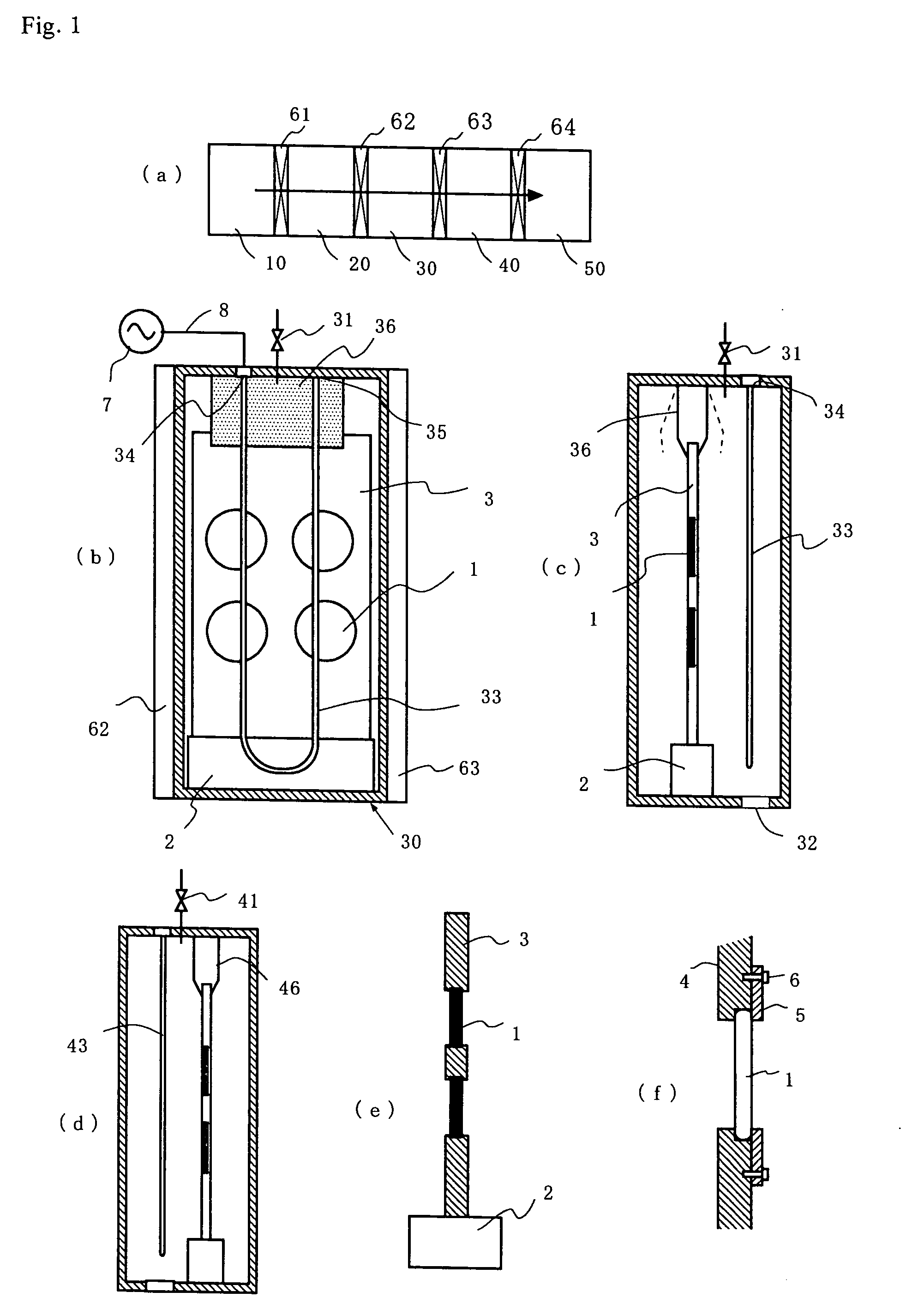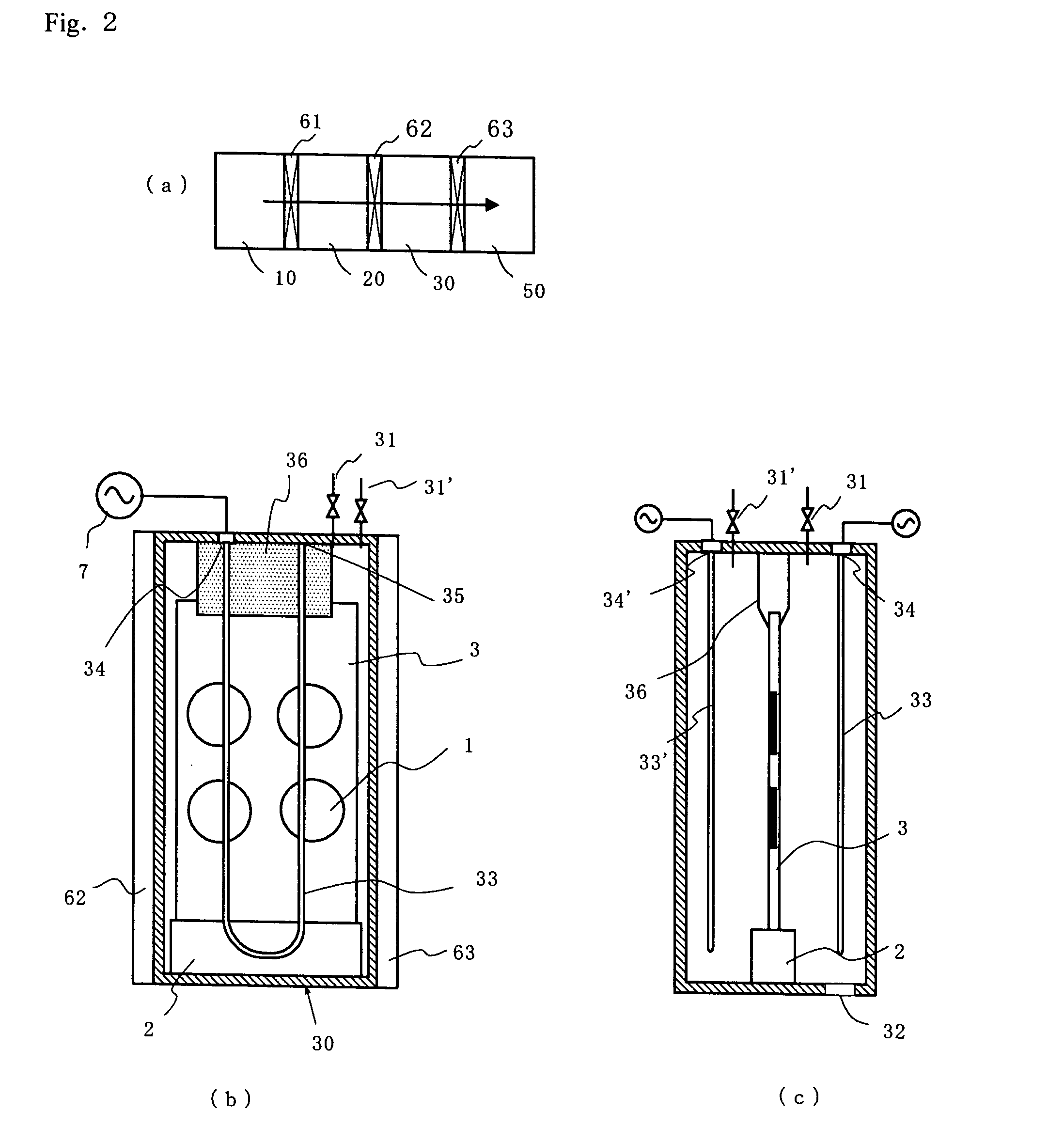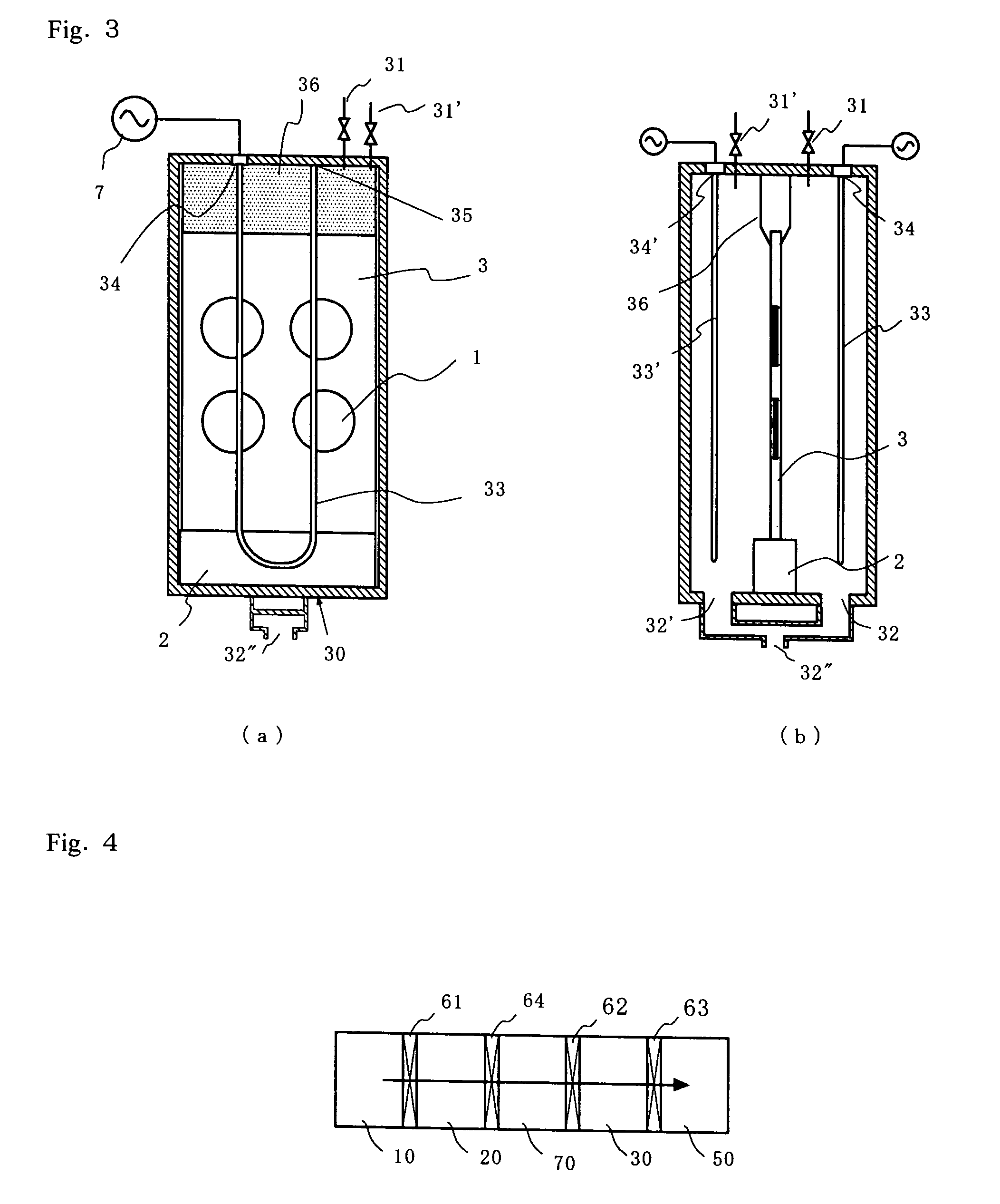Method and device for plasma cvd
a plasma and cvd technology, applied in the field of plasma cvd methods and devices, can solve the problems of enlargement of the whole manufacturing apparatus, increased cost, and difficult to obtain thin films of excellent uniform thickness, and achieve the effect of high productivity
- Summary
- Abstract
- Description
- Claims
- Application Information
AI Technical Summary
Benefits of technology
Problems solved by technology
Method used
Image
Examples
first embodiment
[0024] (First Embodiment)
[0025] The first embodiment of this invention is shown in FIG. 1. FIG. 1 is a schematic view showing an example of the plasma CVD apparatus used for manufacturing solar cells shown in FIG. 7.
[0026] As is shown in FIG. 1(a), a plasma CVD apparatus is composed of a load lock chamber 10, a heating chamber 20, a first plasma CVD (PCVD) chamber 30, a second PCVD chamber 40, and a cooling chamber 50. These chambers are connected through gate valves 61-64. The substrates 1 are held by a substrate holder 3 so that both thin film formation surfaces of substrate are exposed, for example, by pressing the circumference portion of substrate with a plate 4 having apertures and press plates 5, and fixing them with screws 6, as shown in FIG. 1(f)
[0027] The substrate holder 3 holding a plurality of substrates is fixed on a carrier 2 (FIG. 1(e)), and transported along the rails constructed in the chambers in the direction of arrow shown in FIG. 1(a) to process the substrates ...
second embodiment
[0036] (Second Embodiment)
[0037] Although the p-type and n-type a-Si films are formed in the different PCVD chambers in the plasma CVD apparatus of FIG. 1, it is also possible to form different films on respective surfaces of substrate in one PCVD chamber. The embodiment for this purpose is shown in FIG. 2. As shown in FIG. 2(a), the whole apparatus is nearly the same as that shown in FIG, 1, except that the number of PCVD chamber is one.
[0038] As shown in FIGS. 2(b) and 2(c), two inductively coupled electrodes, whose power feeding portions 34, 34' are connected to high-frequency power sources, are arranged in plasma CVD chamber 30. The substrate holder is transported into the PCVD chamber and placed between these two electrodes. In addition, two gas supply pipe lines 31, 31' for two film forming gases (SiH.sub.4 / PH.sub.3 gas and SiH.sub.4 / B.sub.2H.sub.6 gas) are connected to the PCVD chamber.
[0039] When the substrate holder is transported into PCVD chamber 30, SiH.sub.4 / PH.sub.3 ga...
third embodiment
[0042] (Third Embodiment)
[0043] In the example of FIG. 2, the p-type a-Si film is formed after the n-type a-Si film is formed. It is also possible in this invention to simultaneously form two different films. The third embodiment which makes possible simultaneous formation of different films is shown in FIG. 3.
[0044] The apparatus has nearly the same configuration as that of FIG. 2(a), except for the PCVD chamber. The PCVD chamber of this embodiment, which is shown in FIG. 3, differs from that shown in FIGS. 2(b) and 2(c) in the following points. That is, in the case of FIG. 2, the blockage is provided to prevent plasma generated in one film forming space for the n-type a-Si film or p-type a-Si film from diffusing to the other film forming space and depositing on the p-type a-Si film or n-type a-Si film, respectively. However, in the third embodiment, the length of substrate holder fixing jig 36 should be made as close as possible to the length of chamber, so that it can act as the ...
PUM
| Property | Measurement | Unit |
|---|---|---|
| distance | aaaaa | aaaaa |
| circumference | aaaaa | aaaaa |
| frequency | aaaaa | aaaaa |
Abstract
Description
Claims
Application Information
 Login to View More
Login to View More - R&D
- Intellectual Property
- Life Sciences
- Materials
- Tech Scout
- Unparalleled Data Quality
- Higher Quality Content
- 60% Fewer Hallucinations
Browse by: Latest US Patents, China's latest patents, Technical Efficacy Thesaurus, Application Domain, Technology Topic, Popular Technical Reports.
© 2025 PatSnap. All rights reserved.Legal|Privacy policy|Modern Slavery Act Transparency Statement|Sitemap|About US| Contact US: help@patsnap.com



